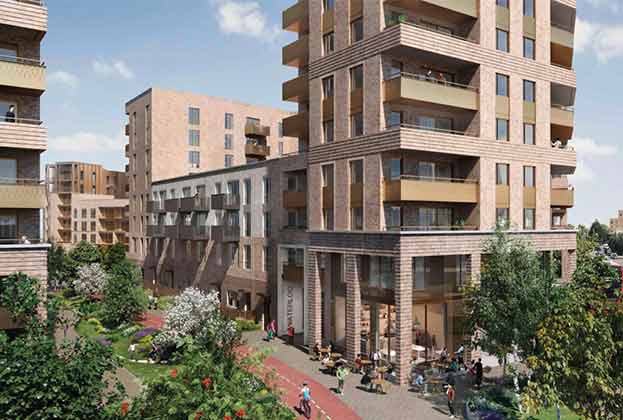East London Corridor’s retail assets can be a driving force in providing social initiatives
The repurposing of retail assets can have a significant role to play in not only delivering housing but also leading the regeneration of an area. The importance of people and community to retail strategy accelerated in 2020. Retail-led schemes now must be centres within the community, a central hub that provides employment, social engagement and leisure.
Sustainability must be at the forefront of planning and design. Developments must be thinking about how they can provide wellbeing considerations, community and charitable programmes, skills to local people, and green space.
Molior identifies 37 retail parks for residential development across London, 11 of which sit in the East London Corridor. Havering and Redbridge each contain four retail parks with potential capacity for over 3,400 homes between them. Shopping centres and large, single retail assets could further add to the mixed-use pipeline.
Open, green space
The Rom Valley retail park in Romford could deliver over 1,000 homes along with several social initiatives. It includes a new riverside walkway alongside the River Rom, a new health centre with capacity for 20 GPs and nurses and an £8m contribution to the Council for delivery of social infrastructure facilities such as schools and community projects. Over half of the entire site will be open, green space.
Plans for Ilford retail park focus on producing a high-quality public realm. The 672-home development will be rebranded as Ilford Eastside and will provide a new primary school, community and health centres and flexible office space. Artistic light installations will turn this area into an urban art destination for Ilford and attract people to the space, and a biodiverse roof and a recreational ‘green plaza’ will also be part of the development.
In March 2021, the redevelopment of a Homebase site in Waltham Forest was approved. A 583 mixed-use scheme that combines landscaping, tree planting and green walls to deliver a biodiversity net gain of 233%, well above the London Plan requirement of 10%.
Repurposing retail assets certainly has a large role to play in the future of the East London Corridor. Not only do they have the potential to deliver high-density housing, the need for which has been highlighted in this paper, but also to deliver sustainable development and provide the social and place-making initiatives to continue to transform this part of London.
Summary
There are a number of identified areas in the East London Corridor that have the potential to undergo dramatic regeneration. 2020 has increased the emphasis on local towns, community and vibrancy that will need to be considered for successful development. The increase in investment into the East London Corridor will continue to upgrade the area and make it a more attractive place to live, fuelling the potential for value growth.
Read the articles within Spotlight: East London Corridor Development below.
.jpg)

